If you want to know about the origin of architecture or Le Corbusier’s Villa Savoye or ribbon development concept, please click the link.
Le Corbusier (1887-1965) was a Swiss-French architect, designer, urban planner, and writer who is widely regarded as one of the most influential architects of the 20th century. He was born Charles-Édouard Jeanneret in La Chaux-de-Fonds, Switzerland, and later adopted the pseudonym Le Corbusier, which he used professionally for the rest of his life.
- Le Corbusier was a pioneer of modern architecture, and his work helped to shape the architectural and urban design of the 20th century.
- He was a proponent of the idea that buildings should be functional, efficient, and beautiful, and he believed that architecture should be grounded in a rational and scientific approach.
- He is perhaps best known for his work on the design of the Unité d’Habitation, a large housing complex in Marseille, France, which has become a landmark of modernist architecture.
1) Introduction about Le Corbusier
- Leader of the international style
- Born october 6, 1887
- Died august 27, 1965
- Place of birth: la Chaux de fonds, Switzerland
- Education art education, La Chaux de fonds; studied modern
- Building construction with Auguste Perret, Paris
Selected projects

- 1922; ozenfant house and studio, paris
- 1927; house at weissenhof
- 1927; villa stein, garches, france
- 1929; villa savoye, poissy, france
- 1931-1932; swiss building, cité universitaire, paris
- 1946-1952; unité d’habitation, marseilles, france
- 1953-1957; museum at ahmedabad, india
- 1950-1963; high court buildings, chandigarh, india
- 1950-1955; notre-dame-du-haut, ronchamp, france
- 1954-1956; maisons jaoul, neuilly-sur-seine, paris
- 1956; shodan house, ahmedabad, india
- 1957-1960; convent of la tourette, lyon france
- 1958; philips pavilion, brussels
- 1961-1964; carpenter center, cambridge, ma
- 1963-1967; centre le corbusier, zürich. Switzerland
2) Le Corbusier philosophies
Architecture is the mostly correct and magnificent play of volumes brought together in light.
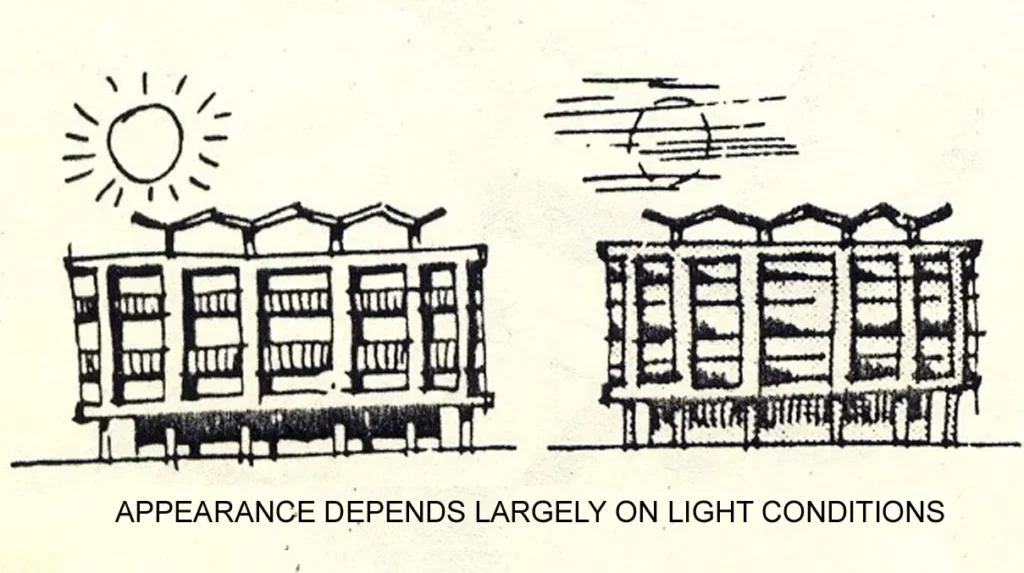
- He stated that a house is a machine for living. By which he primarily meant it should be as efficient as a machine.
- He saw internal space or volume as a big cube and then divided it up both horizontal and vertically, so that one part of the cube might contain taller rooms and other parts smaller and lower ones.
- Show shapes as if he was in movement the way a cubist painter interpreted objects.
- He was influenced by the elements of nature.
- He believed that sun is the first and foremost master.
- Space, light and volume were the basic elements of his creation.
- He mainly used concrete and reinforced steel.
- He designed the building in 4 dimensions, the fourth being nature.
- He used simple geometric forms.
- Le Corbusier liked to compare the city he planned to a biological entity: the head was the Capitol, the City Centre was the heart and work areas of the institutional area and the university were limbs.
3) System of measurement


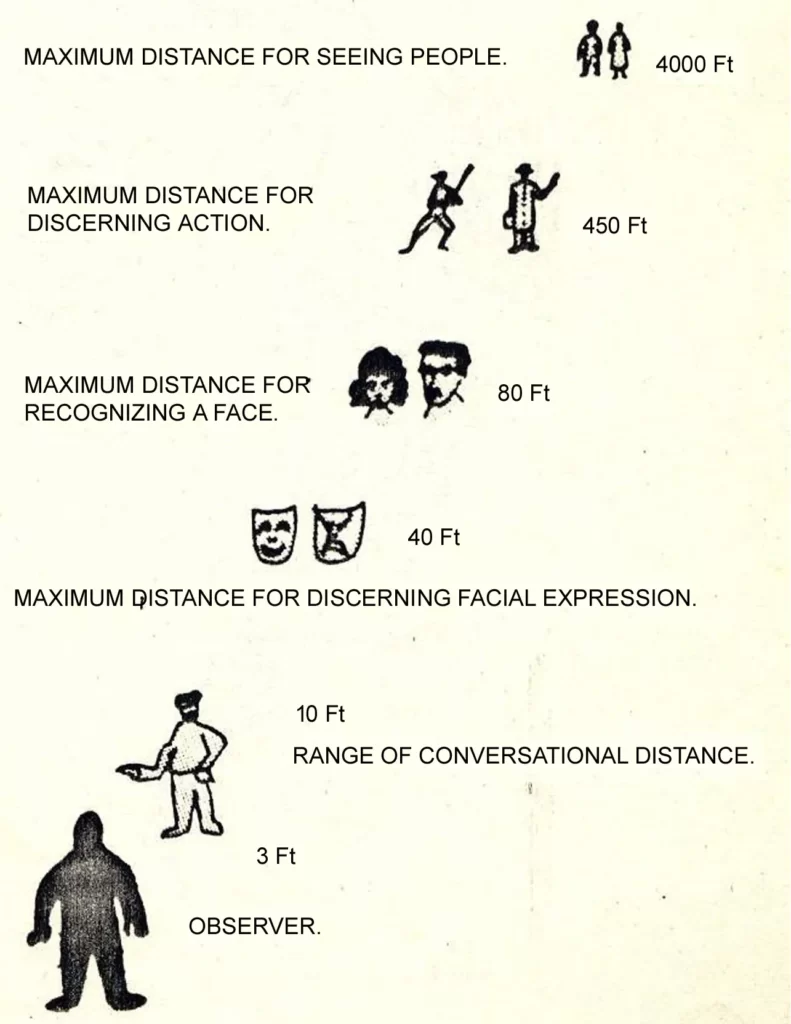

Proportion and angle of vision
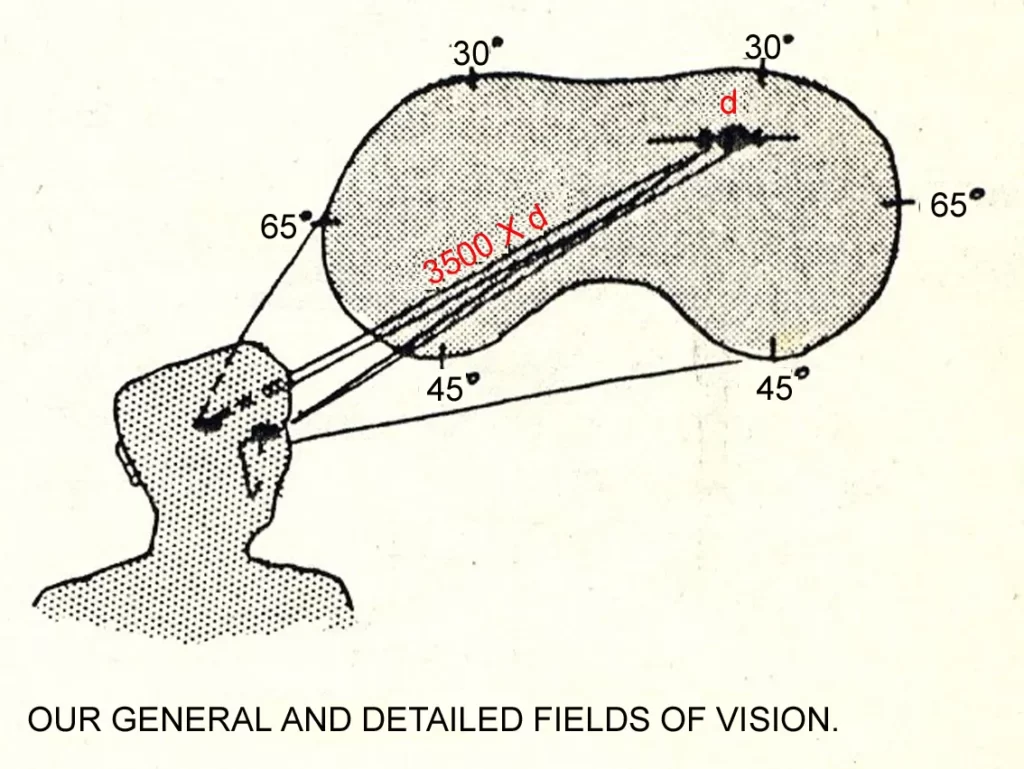

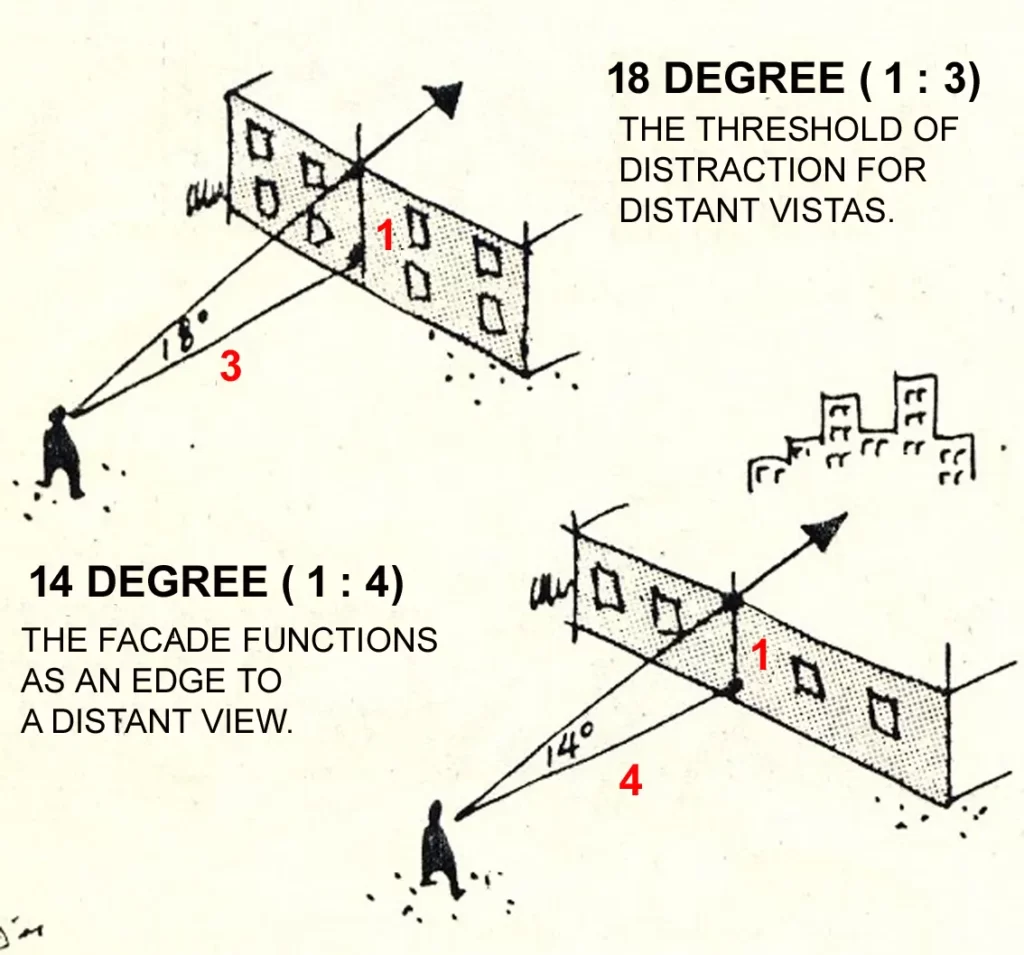
Relation between building and space
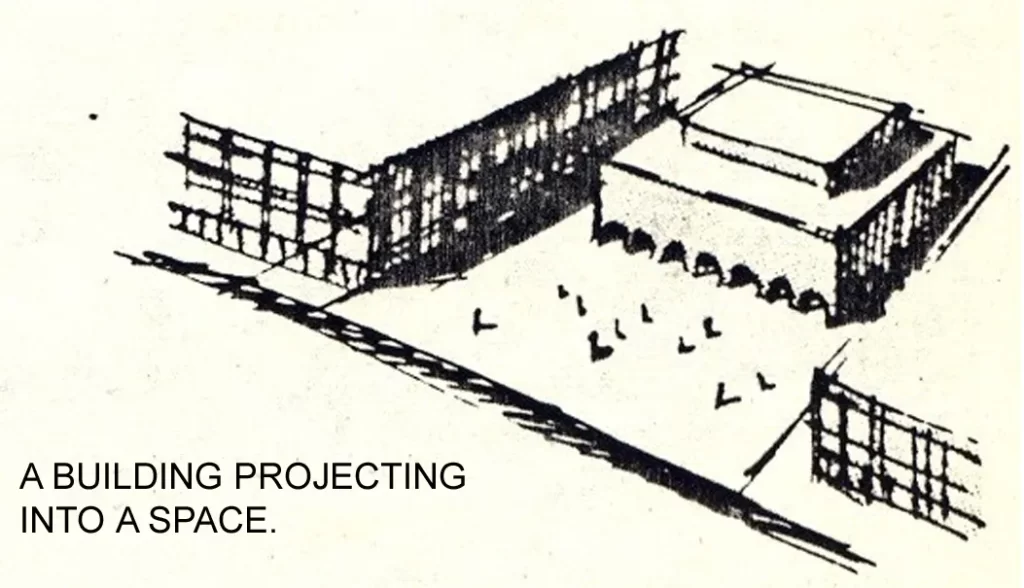


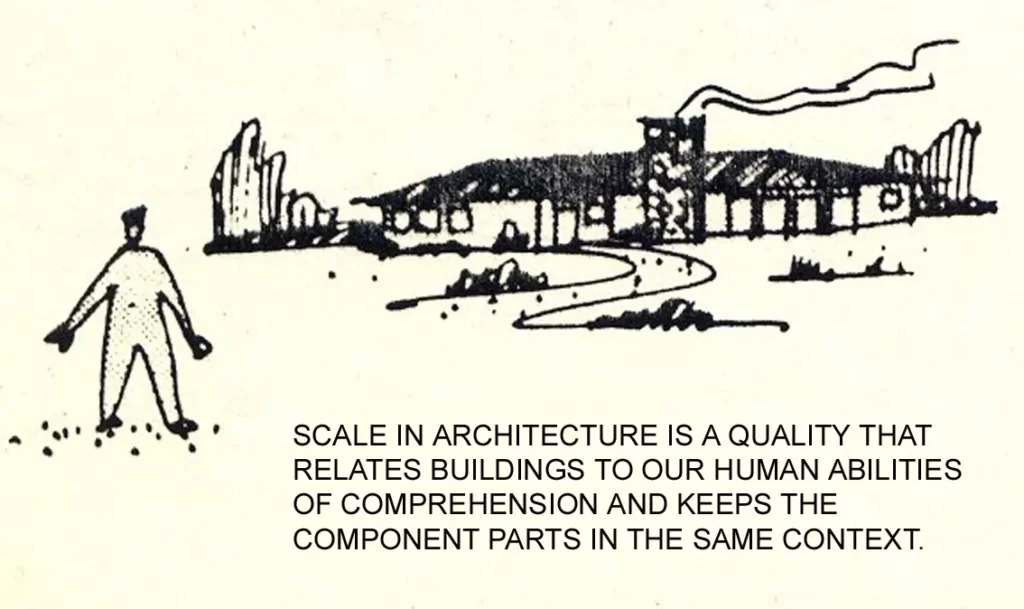


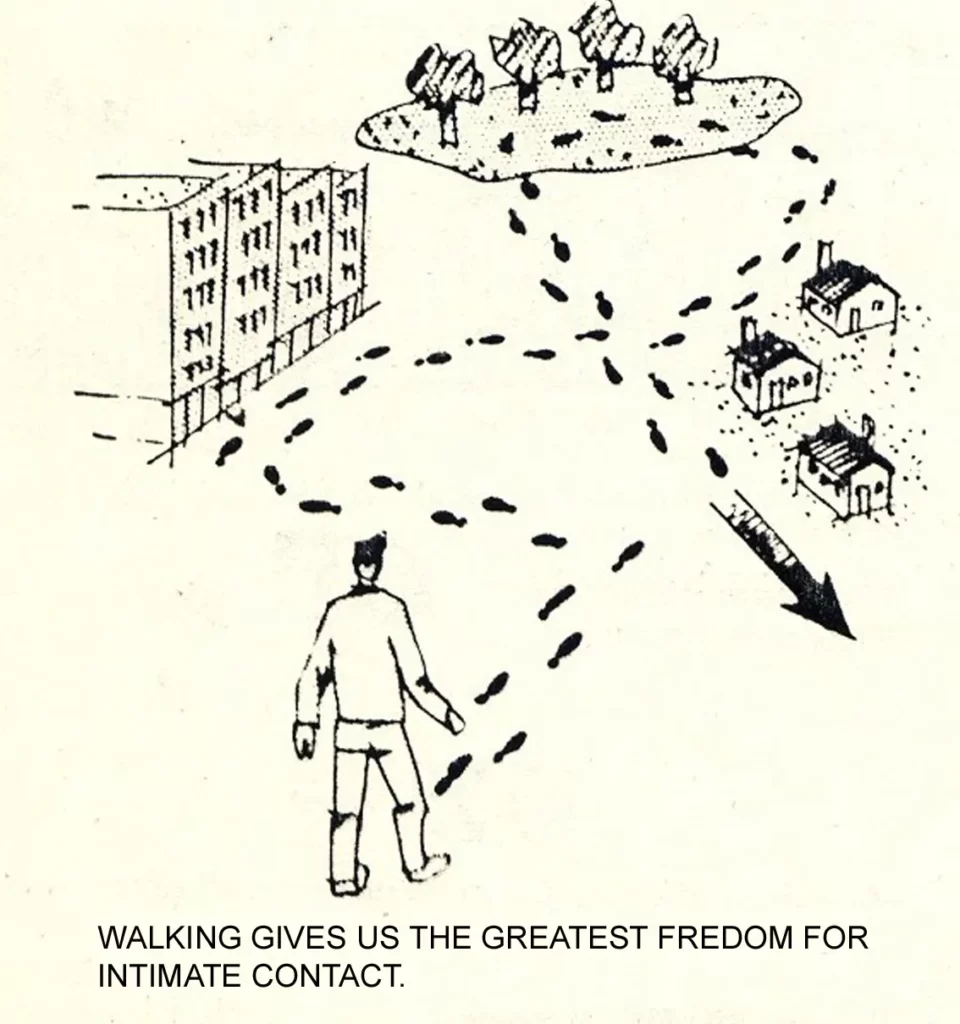
3) The modular
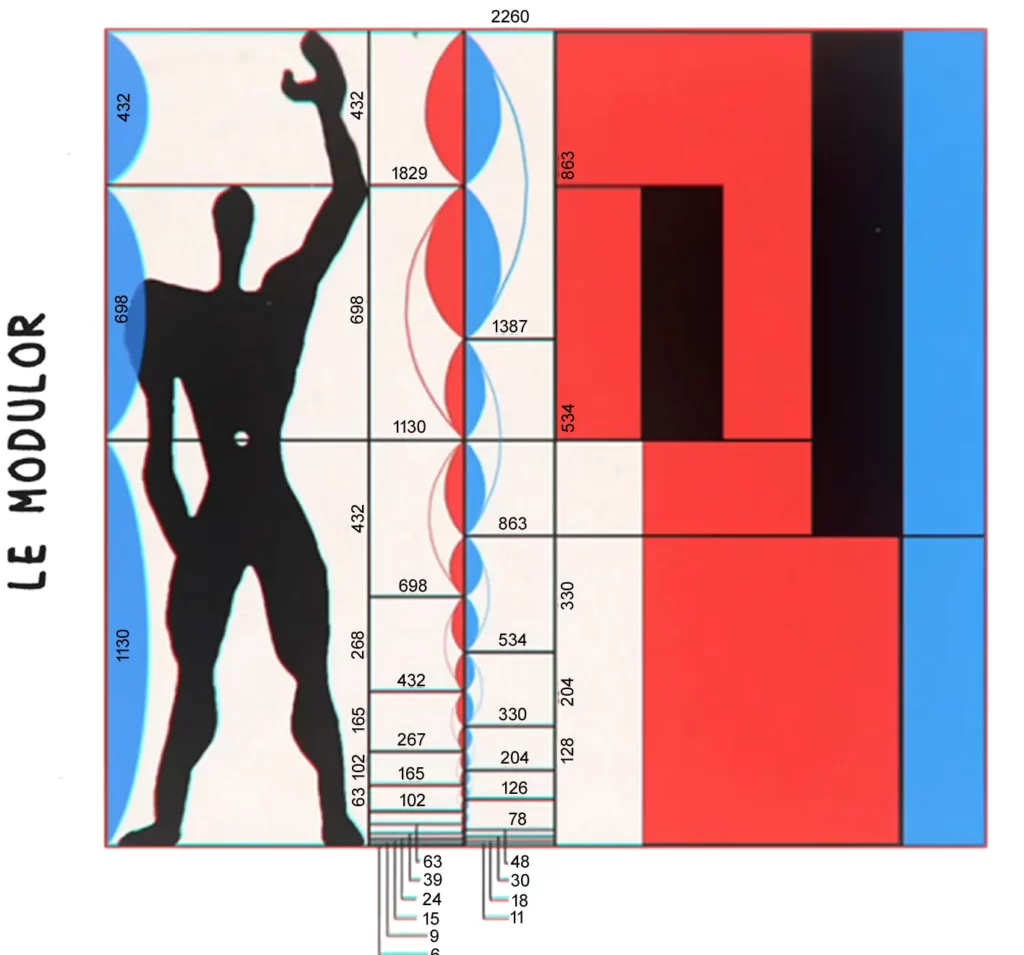
- It is a harmonic measure to the human scale, universally applicable to architecture and mechanics.
- It is a system of related proportions based upon the ancient golden section and the human figure that reflects that section.
- In general, the modular starts with the division of height of the man into 2 proportions, at the waistline and these two proportions govern all other dimensions of the human body.
- For e.g., a man with his arm naturally upraised creates another modular proportion, the distance between his head and his waist buy in people relation to the distance between his head and his fingertips.
- It is applicable in the design of everything from a piazza to a bookshelf.
- It apparently is the only numerical scale that relates the foot and the inch system to the metric system and vice versa.
- The UNITED DE HABITATION is constructed on 15 measures of the modular. This immense building 140m long and 70 m high appears familiar and intimate because from top to bottom, both inside and outside it is to the human scale.
- Albert Einstein told LE CORBUSIER about modular, that this was a range of dimensions that made the bad difficult and the good easy.
- Though Ron champ Chapel is almost pure sculpture, it was also based on thus range of dimensions; the modular visits proportionate scale makes it possible and infinite no. of variations with a unit system of construction.
4) Le Corbusier’s principles of design
- Extension of the domino’s principal’s which remained LE CORBUSIER major devices for the rest of his life.
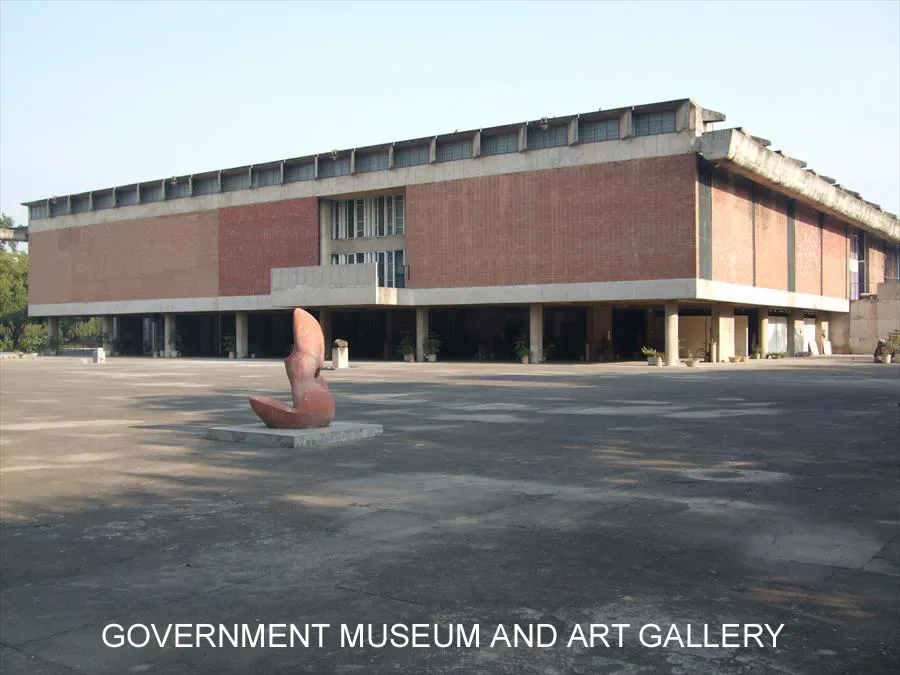
Piloti
- Central element from which the others evolved, it lofted buildings off the ground allowing natural ground surface or traffic to pass underneath was the basic device in both city planning and architecture.
The roof garden

- This has social functions the one building in which the architect intended to introduce nature into the city in turn the planting could supply insulation for the flat concrete roof. This also maintains a constant humidity for the concrete there by assuming a regulated temperature.
The free plans
- Up till now the plan was like the load bearing walls where pilots supported the weight of the building its interior and exterior walls could pass anywhere according to functional demand or aesthetic intensions. It allowed rooms of different sizes to be scattered into the skeleton. Great economy constructed volume and vigorous use of each centimeter.
The bay window
- Windows could now run from one edge of the façade to the other. It let in most light and allowed the effects of transparency and planarity. R.C.C brought a revolution in the history of window.
The free facade
- It is a direct consequence of the skeleton structure. The columns are now set back from the facades towards interiors of the house. The floor extends outwards in a cantilever. It could be a total void running from slab to slab, a thin membrane or a window of any size. Any sort of opening could be lift depending on demand of view of privacy, climate and composition.
5) Le Corbusier’s work
i) The assembly hall, Chandigarh
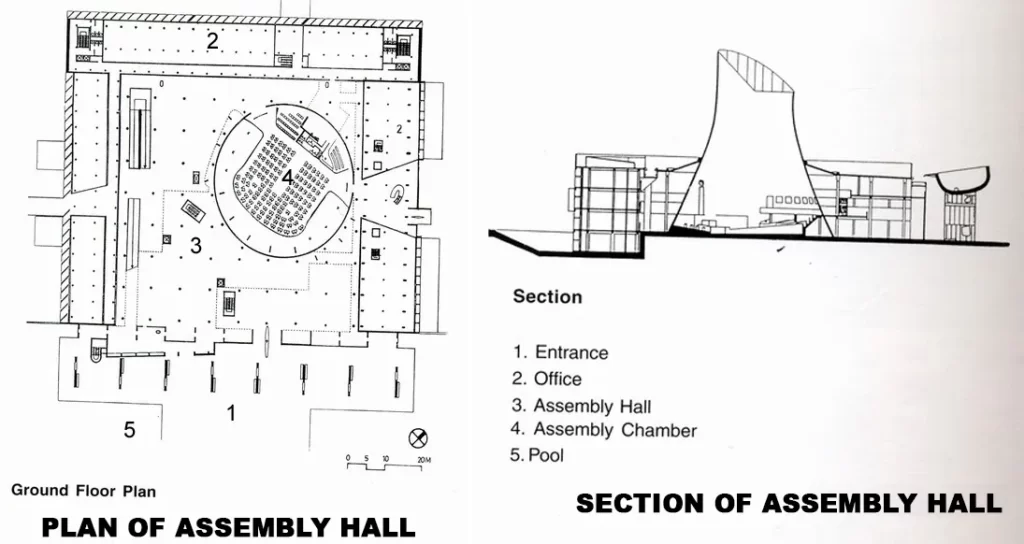
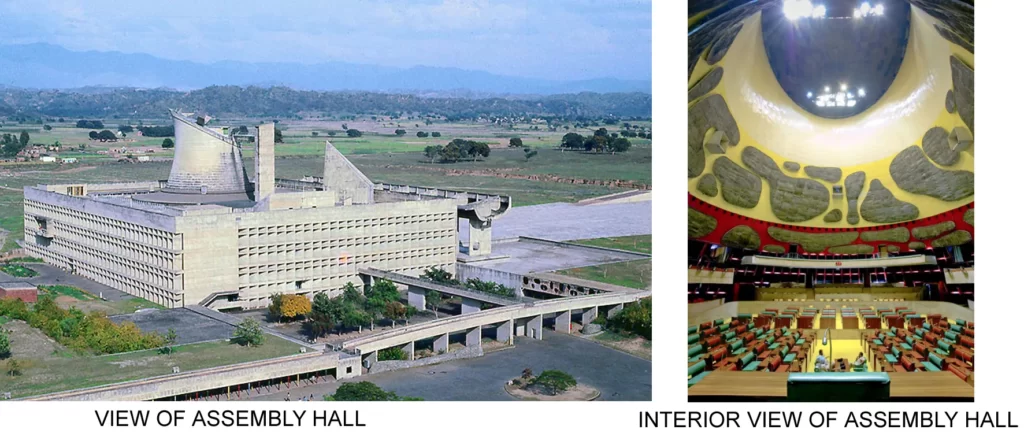
- Close to the huge sunken parking area in front of the Secretariat is located the most sculptural and eye-catching of all the geometrical forms of the Capitol the Assembly.
- All the initial sketches incorporated some form or the other of a tower atop a cuboid building. a great hyperbolic drum, 39 meters in both diameter and height was incorporated in the plan along with a pyramidal skylight connected to the drum by a small bridge.
- The building has two entrances: one at the basement level for everyday use and the other from the piazza level for ceremonial occasions
- The large cuboid base of the hyperbolic drum contains the independent volumes of the upper and the lower chambers.
- An irregular space between the two chambers is a large lobby with sculptural lights designed by Le Corbusier.
- This area is animated by the discussions of legislators during breaks in the Assembly sessions.
- The external facades of the cuboid base has rhythmic pattern of the brise-soleil with its play of light and shadow on three sides.
- And on the fourth opening towards the large piazza facing the High Court is a huge trough supported on massive pylons.
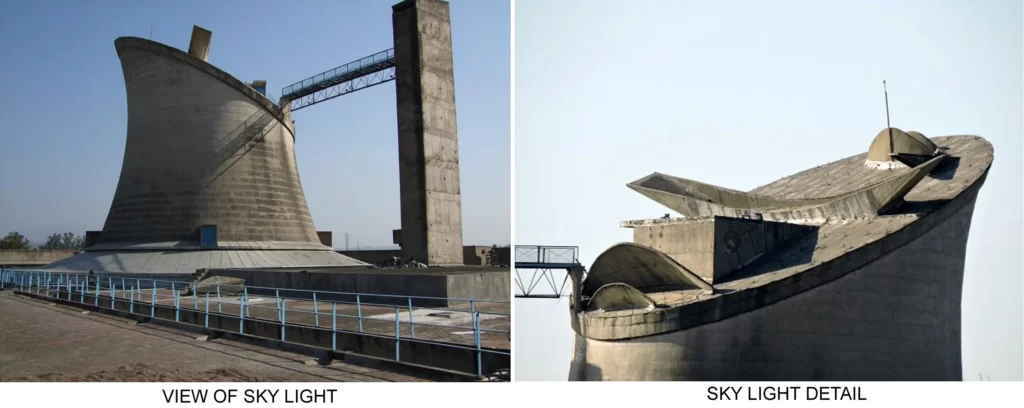
ii) The high court
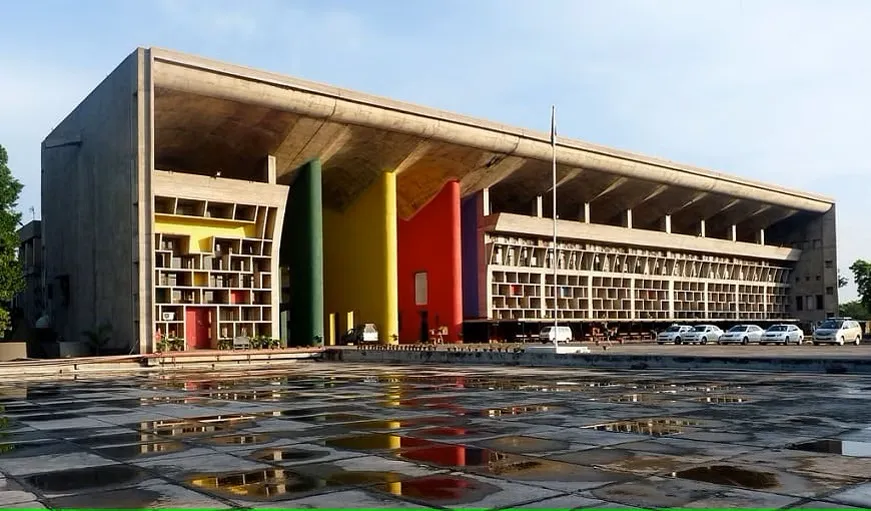
- The High Court is a linear block with the main façade toward the piazza. It has a rhythmic arcade created by a parasol-like roof, which shades the entire building.
- Keeping in view the special dignity of the judges, Le Corbusier created a special entrance for them through a high portico resting on three giant pylons painted in bright colors.
- Juxtaposed between the main courtroom of the Chief Justice and eight smaller courts, is a great entrance hall. Its scale — especially the height — is experienced most intensely while walking up the ramp.
- The symbolism of providing an “umbrella of shelter” of law to the ordinary citizen is most vividly manifested here. The continuity of the concrete piazza running into this space establishes a unique site and structural unity of the structure with the ground plane.
- The massive concrete pylons representing again the “Majesty of Law” are painted in bright primary colors and visually punctuate the otherwise rhythmic facade of the High Court.
- The rear side of this ceremonial entrance for the judges is a working entrance and a large car park at a sunken level. The massive piers and the blank end walls have interesting cut-outs and niches, to establish a playful connection with the human scale.
- A number of symbols that encapsulated Le Corbusier’s view of man, earth, nature, the emblems of India and the scales of justice were depicted in abstract, geometric patches
- The designs are based on Le Corbusier’s Modular, which he used to organize the entire Capitol Complex and give dimensions to all its buildings.
- Each courtroom was provided with an independent entrance from the piazza and the gracefully curving overarching profile of the brise-soleil screen was intended to provide the symbolic protection.
- However, this “metaphor” of protection proved highly non-functional against intense summer heat and the monsoon rains, thus requiring a single-storied continuous verandah running in front of them as a later addition.
iii) Dominos house 1914
- Post war reconstruction led him to a system of construction which also formed the bases of low cost housing
- A structural system or frame work was conceived which was completely independent of the floor plan of the house
- The walls and windows can be put where the designer wants them or glazed the way he wants
- It consists of two concrete slabs kept apart by columns and linked only by an open staircase.
- It was a completely new method of construction in which
- Windows would be attached to the structural frame.
- Doors to be fixed up with their frame and lined up with wall panels to form partitions.
- Then begins the construction of exterior walls.
- Deceptively simple diagram that affected the whole feature of architecture.
- Also explains the feature of modern architecture that is most obvious and most disliked i.e. flat roofs are convenient because they make possible a totally free plan.
iv) Town planning of Chandigarh
- Introduction of Le corbusier in planning of chandigarh.

- After Mayer and Nowicki, Le Corbusier, Pierre Jeannert and British architects Maxwell Fry and Jane Drew were invited for the design.
- Le Corbusier- chief architectural adviser took charge of master planning of Chandigarh, designing Capital Complex and City center.
- Others designed housing, schools, hospitals and other civil structures besides directing actual construction on site.
Revised plan by Le corbusier
- Socio economic ruled out the index of vertical planning by Le Corbusier which he most favoured.
- He decided to design a horizontal city as per they need and demands.
- He proposed master plan for a population of five lakhs to be realized in two phases.
- First phase 1-30 sectors for 150,000 these are sparsely populated with very low density and only bigger plots.
- Second phase 31-47 sectors for 3 lakhs these are very densely populated.
- Duly considered Mayer-Nowicki plan but introduced road systems by adopting grid iron pattern in very rigid form.
Corbusier biological phenomena of town
- Le Corbusier liked to compare the city plan to a biological entity, so arrange the functions in Chandigarh as per his biological analogy.
- The head was the capital, the city center was the Heart, and work areas of the university and the industrial area were the limbs.
- The leisure valley traversing almost the entire city and along with the parks extended length wise through each sector to enable every resident to lift their eyes to the changing panorama of hills and sky, these green spaces are the lungs of the city.
- He identified for basics functions of a city which were living, working, circulation and care of the body and spirit.
- Each sector was provided with its own shopping and community facilities, schools and places of worship.

- Circulation was of great importance to Le Corbusier and determined the other 3 basic functions.
- He created hierarchy of roads and sought to make every place in the city swiftly and easily accessible and at the same time ensure tranquility and safety of living spaces.
- Its circulation was a dominant function, then of all the bodily elements, it was the Head i.e., the capital that most completely engaged the master Architects interest.
- Le Corbusier always looked for a chance to make a dramatic statement in the context of Chandigarh that was that capital in this, the priorities of Indian government and Le Corbusier’s natural inclination conversed.
System of roads

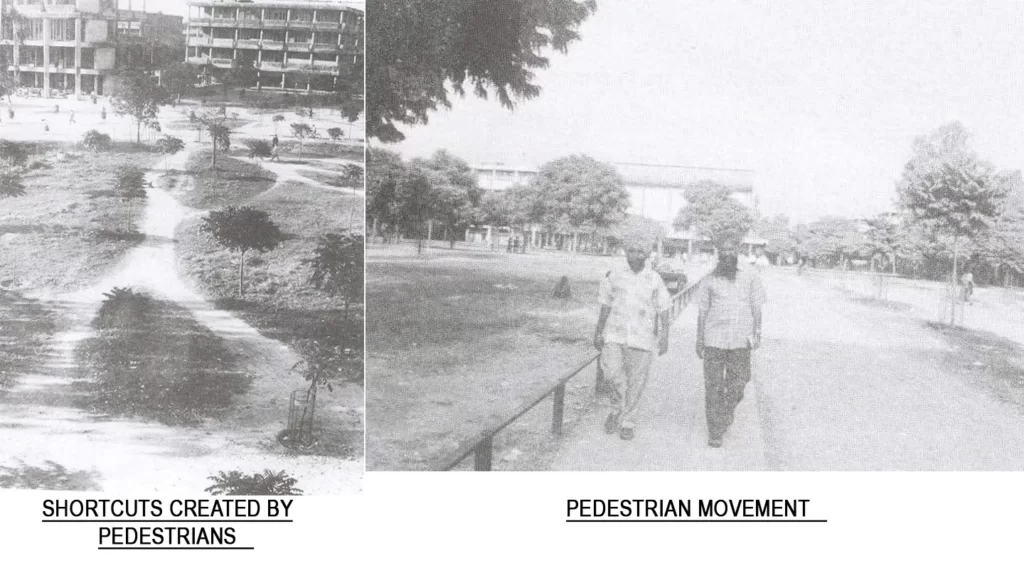
- Symbolized of a structure of a tree.
- Roads are numbered V1,V2, V3…..V7 per the hierarchy and intensity of traffic.
- THE V-1 is the road which is going through the continents, traversing rural areas and cities.
- THE V-2 take immediately the succession of V-1 at the beginning of the city. Other V-2s can be the tracings of intentional municipal will of greatness and usefulness together.
- THE V-3 are a new kind of roads devoted exclusively to vehicular traffic (especially fast traffic). These ways must be interrupted the least. They are surrounding the sectors as explained above.
- THE V-4 is the right place of the 24 hours life of a sector. It is a linear event and particularly in Chandigarh. It should be situated on the shadow side (which is the SW side)
- THE V-5 are roads which assure the internal distribution of traffic inside a sector.
- THE V-6 have to give access to the doors of the dwellings. V-5 and V-6 must never receive transit traffic (bicycle, cars and buses).
- THE V-7 is situated in the green ribbon going SW to NE in the direction of the hills. The V-7 gives the vertical contact between the sectors and crosses the V-2 South and two other horizontal.
Planning of sector ( City unit )

- Basic unit is sector 800×1200 mts. for population of 3000-20,000 depending upon plot’s size and density.
- Sector based on concept of self sufficient neighborhood unit.
Introvert planning:
- Permitting only for vehicular entries.
- Central green space bisected by shopping street’s V4.
- Loop road V5 distributes traffic to interior of sector.
- Individual houses are approached by streets, V6, and branch out from loop road.
v) City centre, chandigarh

Location
- It is located at the junction of two V2 roads-Madhya Marg and Jan Marg-which have a heavy traffic load.
- The former road is used by public transport, and general traffic converges on it from outside.
- The city whiles the latter serves as a ceremonial approach to the Capitol Complex.
- The centre is spread over an area of 97 hectares and is divided into two zones.
- The north-eastern zone is meant for major commercial and civic functions and
- The south-western zone accommodates the functions of local administration.
- These two zones are distinctly separated by a linear commercial strip which is in alignment with the shopping streets on the V 4 roads of adjoining residential sectors.
Main Features
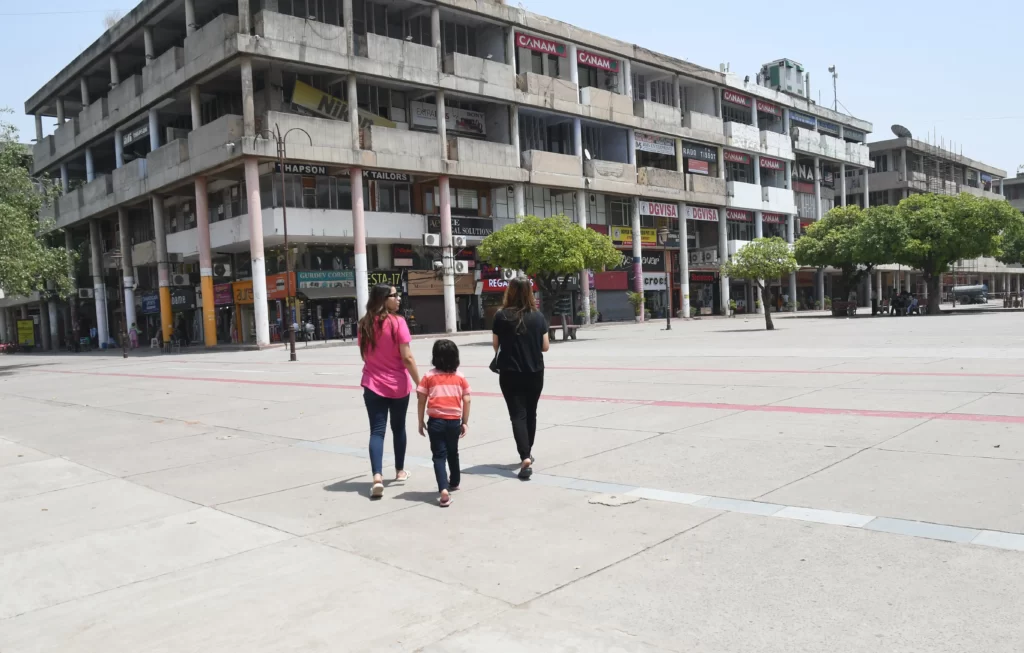

- It accommodates four floors, with shops on the ground floor and offices on the upper three floors.
- Unlike the shop-cum-offices in the main commercial centre, these are designed on a 35-meter wide repetitive bay pattern. Three bays form one lO-metre wide unit and have its independent service core.
- The shops are accessible through a deep-recessed verandah which runs all along its length on the north-east side.
- The offices on the upper floors can be reached through individual staircases approachable from the front verandah.
- On the south-west side, these blocks have service courts and wide parking spaces for loading and unloading of goods. As a pleasant departure from the concrete facades of other buildings in the City Centre, this row of shop-cum-offices is designed in exposed brick-face.
- The facade has been kept as simple as possible with a verandah to protect the shops from rain and sun.
- The repetitiveness of these units has been highlighted by vertical grooves which separate one unit from the other.
- Two over-bridges have been designed to pass through the buildings at the first level facilitating the movement of vehicular traffic through the City Centre without interfering with the pedestrian plaza below.
- Only one of these over-bridges has been constructed so far. Since the whole centre was to be developed by different agencies or developers,
- Le Corbusier introduced a system of standard volumetric and facade controls for all the buildings so that a uniform and regulated growth could be ensured.
- Reinforced concrete-frame structures provide flexibility in organizing interior spaces.
- All the commercial buildings have a repetitive structural grid of 5.25 metres by 5.25 metres.
- They are 6 metres high with all the structural components, that is, columns, beams and slabs in reinforced-cement-concrete (RCC).
Character
- The entire commercial district, horizontal in character, is bordered by two rows of high-rise buildings along its north-west and south-east boundaries.
- Planned to cater to the diverse needs of government and semi-government agencies, these buildings have a controlled volume and facade treatment. Each building measuring 80 meters by 22 meters is seven-storeyed and its height is 26 meters.
- The tilted axes of multi-storied buildings not only help in achieving a north-south orientation but have also created panoramic street pictures which have emerged recently after the completion of a number of blocks.
Despite his lasting impact on the field of architecture, Le Corbusier’s work has been the subject of controversy, particularly with regard to his views on urban planning and his involvement with the Vichy government during World War II. Nonetheless, his legacy as a pioneering modern architect remains significant.